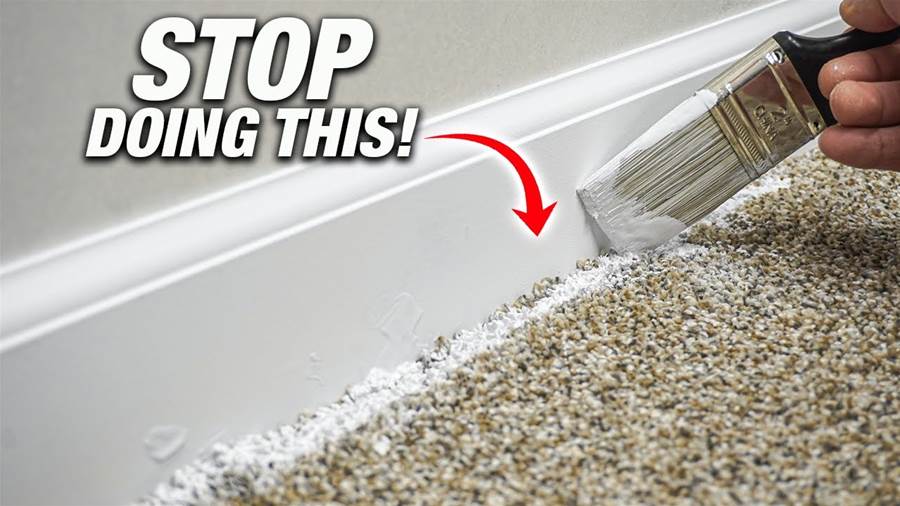

This article discusses a DIY method for painting baseboards over carpet to achieve a super clean finish. The technique shared in the article involves using a combination of painter's tape and plastic sheeting to protect the carpet and create precise lines.
To begin with, the author emphasizes the importance of preparing the room before starting the painting process. This involves removing any furniture or obstacles that may hinder access to the baseboards and vacuuming the carpet thoroughly to ensure a clean and smooth surface.
The next step involves gathering the necessary materials, including painter's tape, plastic sheeting, and a putty knife or credit card.
The author recommends using a high-quality painter's tape that is specifically designed for delicate surfaces, as it is less likely to damage the carpet or leave behind any residue.

Once all materials are gathered, the author suggests starting by applying a strip of painter's tape along the edge of the baseboard, making sure to press it firmly against the carpet. The tape should be placed at a slight angle, with the top edge touching the baseboard and the bottom edge extending slightly onto the carpet.
This angle will help to create a tight seal and prevent paint from bleeding under the tape.
After securing the painter's tape, the author advises placing a strip of plastic sheeting over the carpet, using the baseboard edge as a guide. The plastic sheeting should overlap the tape slightly to ensure complete carpet protection. The author suggests using a putty knife or credit card to press the plastic sheeting firmly against the tape, creating a seal.
Once the plastic sheeting is in place, the author recommends using a small brush or roller to apply the paint to the baseboards. It is important to paint away from the carpet and towards the baseboard, using smooth and even strokes to achieve a clean finish.
The author suggests applying two coats of paint for best results, allowing each coat to dry completely before applying the next.
Finally, after the paint has dried, the author advises carefully removing the painter's tape and plastic sheeting. This should be done slowly and at a 45-degree angle to avoid any paint pulling away from the baseboards or carpet. Once the tape and sheeting are removed, the author suggests inspecting the edges for any imperfections and touching up as needed.
In conclusion, this article provides a step-by-step guide on how to paint baseboards over carpet to achieve super clean lines.
By following the suggested technique using painter's tape and plastic sheeting, homeowners can successfully protect their carpet and create a professional-looking finish.
